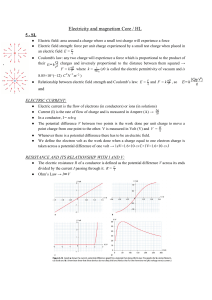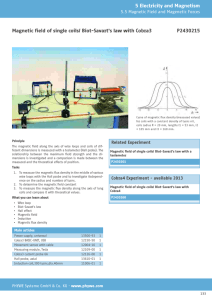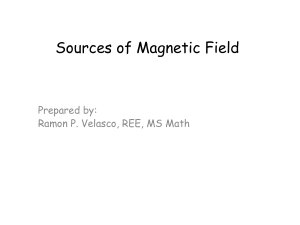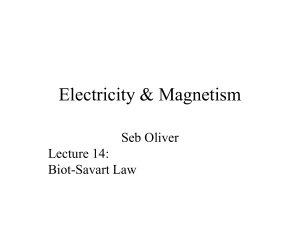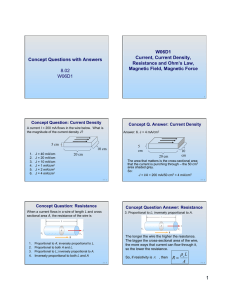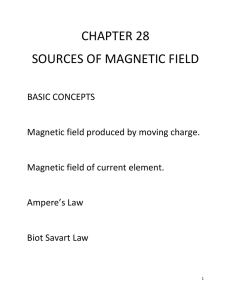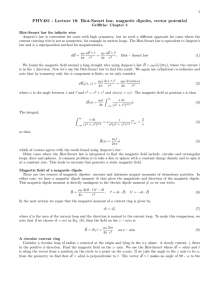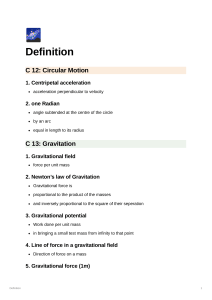Biot-Savart Law
advertisement
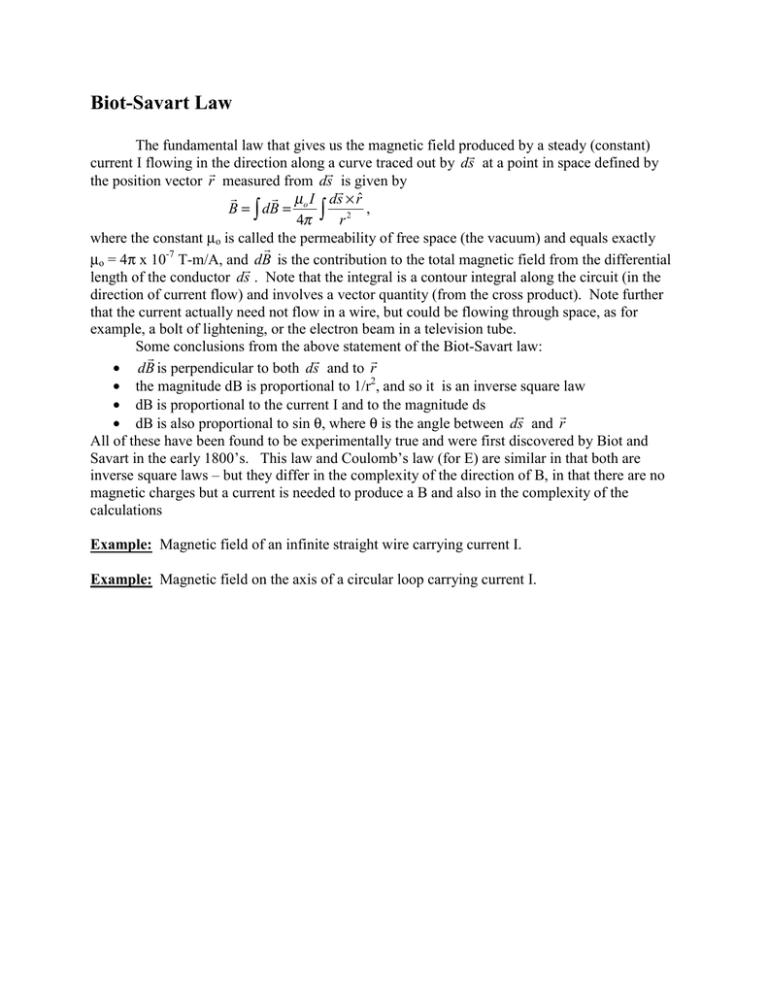
Biot-Savart Law The fundamental law that gives us the magnetic field produced by a steady (constant) G current I flowing in the direction along a curve traced out by ds at a point in space defined by G G the position vector r measured from ds is given by G G µo I dsG × rˆ B = ∫ dB = , 4π ∫ r 2 where the constant µo is called the permeability of free space (the vacuum) and equals exactly G µo = 4π x 10-7 T-m/A, and dB is the contribution to the total magnetic field from the differential G length of the conductor ds . Note that the integral is a contour integral along the circuit (in the direction of current flow) and involves a vector quantity (from the cross product). Note further that the current actually need not flow in a wire, but could be flowing through space, as for example, a bolt of lightening, or the electron beam in a television tube. Some conclusions from the above statement of the Biot-Savart law: G G G • dB is perpendicular to both ds and to r • the magnitude dB is proportional to 1/r2, and so it is an inverse square law • dB is proportional to the current I and to the magnitude ds G G • dB is also proportional to sin θ, where θ is the angle between ds and r All of these have been found to be experimentally true and were first discovered by Biot and Savart in the early 1800’s. This law and Coulomb’s law (for E) are similar in that both are inverse square laws – but they differ in the complexity of the direction of B, in that there are no magnetic charges but a current is needed to produce a B and also in the complexity of the calculations Example: Magnetic field of an infinite straight wire carrying current I. Example: Magnetic field on the axis of a circular loop carrying current I.




